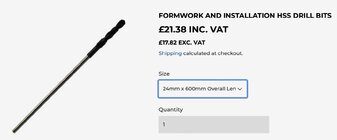Soo I found my 18" face plate for my pre 1920s brown and sharp metal lathe that was converted, and I have a few 20" ish wide maybe 36" or so long logs (lathe has a 22" swing 6' bed thats useable space) and i want to bore a pilot hole..I do not see using or making another extension for a forstner bit a smart choice. I know plenty of folks have made large forms atleast 6' tall but the question here is how to bore the pilot hole to start hollowing.
My first thought is to take my gun drill and start a pilot hole with my tailstock then switch to a drill and gun drill and lock the lathe spindle to let the drill do the work, but I also feel there is a better way, anyone have any information to go off of?
Phot of a .5mm wall goblet for fun
My first thought is to take my gun drill and start a pilot hole with my tailstock then switch to a drill and gun drill and lock the lathe spindle to let the drill do the work, but I also feel there is a better way, anyone have any information to go off of?
Phot of a .5mm wall goblet for fun


